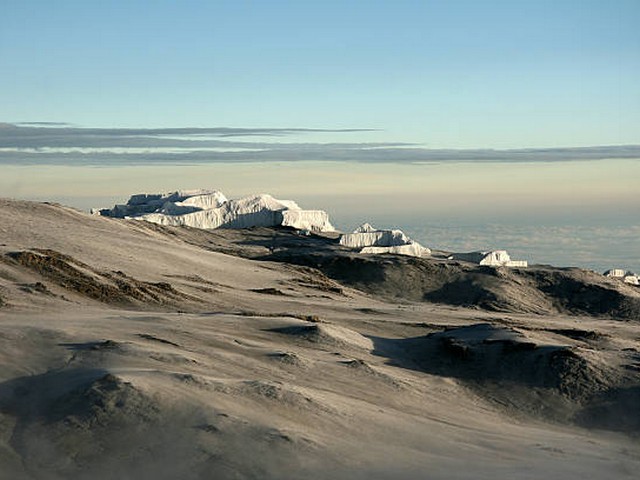Buying Guide For Kilimanjaro Trekking Equipment: Reach The Roof of Africa with Confidence
Introduction
Conquering Mount Kilimanjaro, the tallest free-standing mountain in the world, is a dream many adventurers yearn to fulfill. Situated in the heart of Tanzania, Kilimanjaro’s majestic snow-capped summit, Uhuru Peak, rises gracefully above the African plains. Preparing for this life-changing journey involves not only physical and mental readiness but also equipping yourself with the right gear. In this comprehensive guide from Kilimanjaro Centre For Trekking and Ecotourism (KCTE), we’ll equip you with essential insights on selecting the best trekking gear to ensure a successful and enjoyable climb. Let’s gear up for an unforgettable adventure!
Essential Kilimanjaro Trekking Equipment: What You Need to Know
H2: Footwear: Your Foundation for Success
The importance of high-quality footwear cannot be overstated. When tackling diverse terrains from lush rainforests to alpine deserts, your boots are your best ally. Opt for waterproof, breathable, and well-insulated hiking boots with robust soles and good ankle support. Break them in well before your trek to avoid blisters and discomfort.
H2: Clothing: Layering Up For All Climates
Kilimanjaro’s weather is famously varied, with temperatures ranging drastically. Your clothing strategy? Layering.
- Base Layer: Start with moisture-wicking materials such as merino wool or synthetic fabrics that keep you dry.
- Insulation Layer: Fleece or down jackets will retain body heat in cold conditions.
- Outer Layer: A waterproof and windproof jacket is essential to protect against harsh winds and rain.
Don’t forget thermal underwear, hiking pants, and sun-protective gear for the daytime heat.
H2: Backpack: Your Trekking Companion
A durable, comfortable backpack is crucial for carrying your essentials. A 35-50 liter pack is suitable for most climbers, featuring multiple compartments for easy access and distribution of weight. Ensure it has adjustable straps and a supported back to ease the load on your spine.
H2: Sleeping Gear: Restful Nights for Energetic Days
After a long day of trekking, quality sleep is vital. A four-season sleeping bag and an insulating sleeping pad will keep you warm during the chilly nights at high altitudes. Consider a sleeping bag liner for extra warmth and hygiene.
H2: Navigational Tools and Communication Devices
While you will be accompanied by experienced guides from KCTE, having a compass, a map of the area, and possibly a GPS can enhance your personal engagement with the trek. Additionally, a fully charged mobile phone and a portable power bank ensure you can communicate in emergencies.
H2: Health and Hygiene Essentials
Altitude sickness can be a challenge; thus, packing altitude sickness medication, water purification tablets, and a basic first aid kit is prudent. Sunscreen, lip balm with SPF, and insect repellent will protect you from the elements. Also, maintain hygiene with biodegradable soap, wet wipes, and hand sanitizer.
H2: Nutrition and Hydration: Fueling Your Ascend
Staying hydrated and nourished is crucial. Carry high-energy snacks like nuts, dried fruit, and energy bars. Although your KCTE guides will provide ample water and meals, a personal water bottle or hydration bladder is necessary for easy drinking access.
H2: Accessories: The Little Things That Matter
Lastly, don’t forget the sundries that make the journey more comfortable:
- Trekking poles for stability
- A headlamp for early morning or late-night treks
- Sunglasses and a wide-brimmed hat for sun protection
- A sturdy pair of gloves and a warm hat for the cold
Why Choose Kilimanjaro Centre For Trekking and Ecotourism (KCTE)?
KCTE isn’t just another tour operator; we are a gateway to an exhilarating and safe Kilimanjaro experience. Our seasoned guides, comprehensive trek support, and commitment to ecotourism ensure every climber not only reaches the summit but also contributes positively to the environment and local communities. By booking your climb with us, you choose a responsible and enriching journey.
Frequently Asked Questions
What is the best time of year to climb Kilimanjaro?
The best times are during the dry seasons: January to mid-March and June to October.
How fit do I need to be to climb Kilimanjaro?
While you don’t need to be an athlete, a reasonable degree of fitness is necessary. Regular hiking or cardio exercises in the months leading up to your trek is advisable.
Can I rent equipment instead of buying?
Yes, KCTE offers high-quality rental options for major gear like sleeping bags and trekking poles. However, personal items such as boots and clothing should be personally fitted.
How do I prevent altitude sickness?
Acclimatization is key. Choose a route that allows for gradual ascent, stay hydrated, eat well, and talk to your doctor about medications that can help mitigate symptoms.
In Conclusion
Preparing adequately for your Kilimanjaro adventure with the right equipment is crucial to the success and enjoyment of your trek. We hope this guide has illuminated your path to choosing the appropriate gear. Remember, each piece of equipment is a tool to help you achieve the pinnacle of African adventure.
Ready to embark on your Kilimanjaro journey with optimal preparation and expert guidance? Book your climb with Kilimanjaro Centre For Trekking and Ecotourism (KCTE) today, and step confidently towards the summit of Uhuru Peak, where the spirit of Africa touches the sky. Let’s conquer Kilimanjaro together!
[Contact us now to start your adventure!]
By following this guide and teaming up with KCTE, you are well on your way to a successful and memorable ascent. See you at the top!




